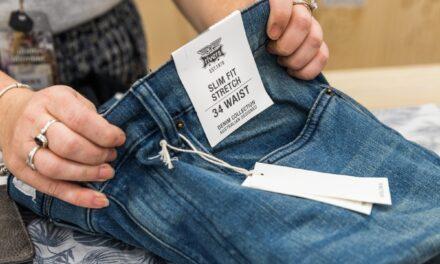Online clothing sales have surged in popularity over the last decade, and clothe selling apps have become a major player in this industry. In this article, we will explore the definition and importance of clothe selling apps in the fashion industry, examine their popularity and growth, and highlight some of the advantages they offer over traditional brick-and-mortar stores.
In this article, you will discover the benefits, types, and features of most clothe selling apps. Learn tips for successful selling, overcome challenges & reach a wider audience
Defining Clothe Selling Apps
Clothe selling apps are mobile applications that allow individuals or businesses to sell new or used clothing items online. These apps provide a platform for sellers to upload photos and descriptions of their products, set prices, manage inventory, communicate with potential buyers, and process transactions. Some popular examples of clothe selling apps include Poshmark, Depop, ThredUp, The RealReal, Rent the Runway, Le Tote.
The Importance of Clothe Selling Apps in the Fashion Industry
The fashion industry is constantly evolving and changing. With emerging trends and styles moving quickly through different demographics globally fashion has transcended borders.
Today’s consumer is always looking for an affordable way to stay up-to-date with current fashion trends without breaking the bank. Here is where clothe selling apps come into play by allowing consumers to buy trendy clothes at an affordable price on these platforms.
Clothes are no longer just a necessity; they’ve become a statement piece among millennials who view clothes as an expression of themselves rather than simply pieces of cloth that serve to cover their bodies from head to toe. With millennials accounting for more than half of all online purchases made today (according to recent reports), it’s no wonder why e-commerce sales have skyrocketed in recent years.
Overview: Popularity & Growth
Clothe selling apps have experienced tremendous growth over the last several years. They have become a popular alternative to traditional brick-and-mortar stores and online retailers. According to a recent survey, almost 60% of consumers in the US have purchased clothing online, with most of them using clothe selling apps to make their purchases.
Additionally, reports show that the global online fashion market is projected to reach $1.5 trillion by 2023, with mobile commerce representing a significant portion of this growth. As more people continue to use smartphones and tablets as their primary devices for shopping, the demand for mobile-friendly shopping experiences will only continue to increase.
Clothe selling apps are rapidly transforming the way consumers shop for clothing items in today’s fast-paced fashion industry. These platforms offer convenience, affordability, and wider accessibility than traditional retailers while also providing ample opportunities for sellers who want to tap into this massive market.
Advantages of Using Clothes Selling Apps
Clothes selling apps have revolutionized the way people buy and sell fashion items. They provide several advantages over traditional brick-and-mortar stores, making them increasingly popular among fashion enthusiasts. Here are some key advantages of using clothes selling apps:
Convenience and Ease of Use
Perhaps the most significant advantage of using clothes selling apps is their convenience. With just a few clicks on your smartphone, you can easily upload pictures and descriptions of your clothing items for sale, set prices, and manage transactions from anywhere in the world. You don’t need to worry about opening or closing hours as these platforms function 24/7.
Besides that, when you need to buy something on a clothes selling app, it’s easy to find what you’re looking for because most applications allow users to filter by brand name, size, color and even style preferences. This means that shoppers can quickly browse through listings and make purchases at any time without leaving their homes.
Access to a Wider Audience
Another significant advantage offered by clothes selling apps is that they enable sellers to reach a broader audience than traditional brick-and-mortar stores ever could. Online marketplaces like Poshmark and Depop have millions of users worldwide who browse through clothing items from various sellers every day. By listing your clothing items on these platforms, you’re exposing them to a vast audience that would never have known about them otherwise.
What’s more? Since most of these shopping apps are free for buyers (some charge sellers small transaction fees), people tend to be more likely to try new brands or styles without any pressure or obligation.
Lower Overhead Costs Compared To Traditional Brick-And-Mortar Stores
Clothes selling apps offer significantly lower overhead costs compared with running a physical store which translates into lower prices for both buyers and sellers. Sellers don’t need to worry about rent, utilities, insurance, or other expenses associated with maintaining a physical location.
As a result, they can pass on these savings to buyers in the form of lower prices. Meanwhile, buyers get to save money by buying directly from the seller, rather than paying the markup that comes with traditional brick-and-mortar stores.
Types of Clothe Selling Apps
Marketplace Apps: Poshmark, Depop
Marketplace apps are a popular type of clothe selling app that allows users to buy and sell clothing items through a platform that connects buyers and sellers. One example of a marketplace app is Poshmark, which has gained significant popularity in recent years. Poshmark offers features such as an easy-to-use interface, secure payment options, and the ability to connect with other users.
Sellers can create listings with detailed descriptions and photos of their items and buyers can browse through the listings to find what they are looking for. Another popular marketplace app is Depop, which is geared towards younger audiences looking for more unique items.
Depop offers features such as the ability to follow other users, share listings on social media platforms, and even purchase items directly from celebrity sellers. Both Poshmark and Depop allow users to sell new or used clothing items.
Consignment-Based Apps: ThredUp, The RealReal
Consignment-based apps work by allowing users to send in their gently used clothing items for resale on the platform. These types of apps typically have strict guidelines about what types of clothing they accept based on brand name, condition, style and seasonality.
ThredUp is one example of a consignment-based app that has become increasingly popular in recent years due to its focus on sustainability – offering secondhand products helps reduce waste. The RealReal is another consignment-based app that specializes in luxury fashion brands – focusing more on high-end designer clothes than casual wear – making it an attractive option for those looking for luxury goods at a discount price.
Rental-Based Apps: Rent the Runway, Le Tote
Rental-based apps allow users to rent clothing items instead of buying them outright. Rent the Runway is one of the more well-known rental-based apps, offering designer clothing rentals for special events such as weddings or other formal occasions.
Rent the Runway offers features such as free backup sizes, easy returns, and next-day shipping options. Le Tote is another rental-based app that offers a subscription service where users can rent clothing items on a monthly basis.
Le Tote allows users to create a personalized profile based on their style preferences and provides them with suggested items to add to their tote each month. Users can also choose to purchase items they like at a discounted price.
Features to Look for in a Good Clothe Selling App
Clothe selling apps are revolutionizing the way people buy and sell clothes. With so many different apps on the market, it can be difficult to know which one is right for you. In this section, we will explore some of the key features that you should look for when choosing a clothe selling app.
User-Friendly Interface
The best clothe selling apps have an intuitive, easy-to-use interface that makes it simple to list your items for sale and manage your inventory. Look for an app that offers a clean, organized layout with clear icons and easy navigation.
A user-friendly interface is especially important if you are new to selling online or using mobile apps. A good example of a user-friendly interface is Poshmark’s app.
The platform provides sellers with clear options such as “sell” or “share” their listings, along with detailed information about their sales history and activity feed. The app also has a feature where users can use emojis or GIFs which make transactions more engaging.
Secure Payment System
Another crucial feature to look for in a clothe selling app is a secure payment system. When you sell clothes online, you want to be sure that you will receive payment promptly and safely.
You also want buyers to feel confident that their personal financial information is protected. One example of an app with a secure payment system is Depop – they handle all payments securely through PayPal so users don’t need to share any sensitive information.
Detailed Product Descriptions and High-Quality Photos
To make your listings stand out on clothe selling apps, it’s essential to provide high-quality photos and detailed descriptions of your products. Your photos should be taken in good lighting and from multiple angles to give buyers a clear view of the item they are interested in. Detailed descriptions help buyers understand the condition, size, and other important features of your item.
ThredUp is an example of an app that requires sellers to upload photos of the actual item they are selling for quality assurance purposes. The app also has a feature where sellers can add multiple photos and zoomed-in shots so buyers can get a closer look.
Customer Support
Last but not least, customer support is a critical feature to consider when choosing a clothe selling app. You want to be able to get help quickly if you have any questions or problems with your transactions or listings.
Look for an app that provides responsive support through email or live chat systems. The RealReal offers top-notch customer support with experienced team members who can answer any question about their luxury consignment products.
They also have reliable delivery services that guarantee safe shipping right at your doorstep. These are some of the features you should look for when choosing a clothe selling app: user-friendly interface, secure payment system, detailed product descriptions and high-quality photos, and responsive customer support.
Tips for Successful Selling on Clothe Selling Apps
Selling clothes online can be a lucrative business, but it requires a few tricks to master. With the increasing popularity of clothe selling apps, it’s important to know how to stand out from the competition. Here are some tips for successful selling on clothe selling apps.
Pricing Strategies
Effective pricing strategies are key to attracting buyers and making sales. When pricing your items, consider things like brand names, condition, and rarity. You can start by researching what others are charging for similar items on the platform.
A good rule of thumb is to price your items competitively–not too high or too low–and adjust accordingly based on demand. Another pricing strategy is offering bundle deals.
This works especially well if you have multiple pieces that complement each other or are in the same size range. You can offer a discount when buyers purchase two or more items from your store.
Creating an Attractive Profile and Storefront
Your profile and storefront serve as your first impression with potential customers. Your profile should include relevant information about yourself as a seller and what customers can expect from buying from you (e.g., fast shipping, great customer service).
Make sure to use high-quality photos of yourself and any branding you might have. Your storefront should look clean and organized with clear photos of all items for sale.
Consider grouping similar items together for easy browsing by customers. Use descriptive titles and detailed product descriptions that include size, material composition, condition, etc.
Utilizing Social Media to Promote Your Listings
Social media is a powerful tool when it comes to promoting your listings on clothe selling apps. Share pictures of your products along with links to your store across various social media platforms like Instagram, Facebook, Twitter etc..
One strategy is using influencer marketing where you collaborate with social media influencers and ask them to promote your products in exchange for free clothes or a commission. This can help you reach new audiences and drive traffic to your store.
Mastering the art of selling clothes on clothe selling apps requires a combination of pricing strategies, attractive profile and storefront creation, and utilizing social media to promote your listings. By implementing these tips, you will increase the likelihood of making successful sales and growing your business.
Challenges facing sellers on clothe selling apps
Competition from other sellers
One of the major challenges faced by sellers on clothe selling apps is competition from other sellers. With the ease of access to these platforms, there is bound to be a high number of sellers offering similar products.
This means that as a seller, you need to find ways to stand out from the crowd and differentiate yourself from other sellers. You can do this by offering unique items, providing exceptional customer service or pricing your products competitively.
Issues with shipping and returns
Another challenge faced by sellers on clothe selling apps is dealing with issues related to shipping and returns. When shipping products, there is always a risk of damage or loss during transit, which can result in dissatisfied customers. Additionally, some buyers may return items that are no longer in their original condition or were not returned within the specified timeframe.
This can lead to lost sales and additional expenses for the seller. Therefore, it’s important for sellers to have clear policies in place regarding shipping and returns and to communicate them clearly with buyers.
Fraudulent buyers
Fraudulent buyers pose a significant challenge for all e-commerce platforms, including clothe selling apps. These individuals may attempt to purchase items using false credentials or payment information which ultimately leads to chargebacks and lost revenue for the seller.
Additionally, some may engage in scamming practices such as claiming an item was not received when it was or returning fake merchandise instead of what was originally purchased. To mitigate this risk, it’s important for sellers to have strong fraud prevention measures in place such as verifying buyer information before accepting payment.
Conclusion
Clothes selling apps offer an excellent opportunity for fashion enthusiasts looking to earn extra income by monetizing their closet or starting an online business without having physical stores. These platforms offer convenience, access to a wider audience, and lower overhead costs compared to traditional brick-and-mortar stores. However, sellers do face challenges such as competition from other sellers, issues with shipping and returns and dealing with fraudulent buyers.
Nevertheless, these challenges can be overcome by implementing clear policies, providing excellent customer service and having strong fraud prevention measures in place. Ultimately, clothe selling apps provide an ideal platform for sellers looking to capitalize on the growing trend of online shopping while providing a convenient way for shoppers to find unique fashion items at affordable prices.










